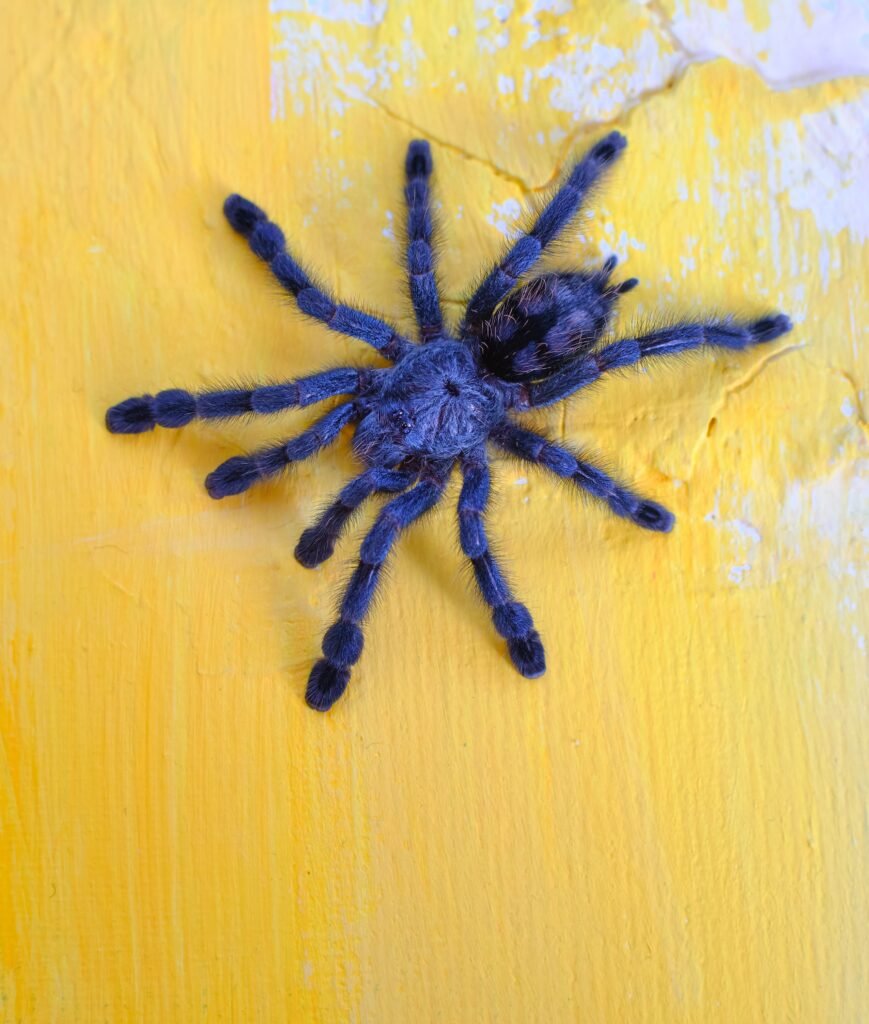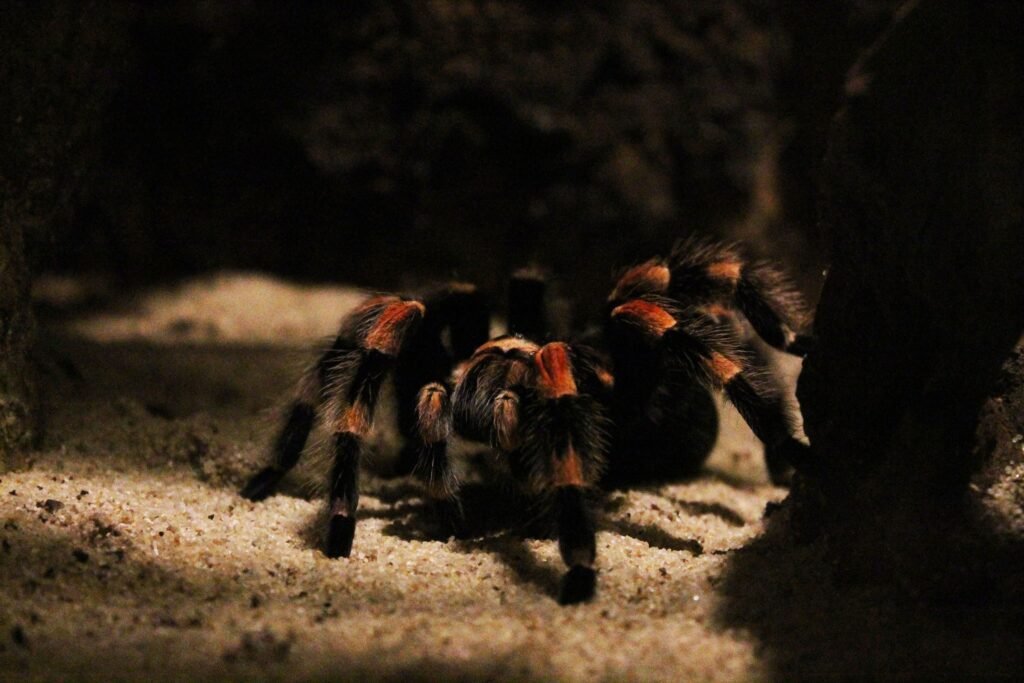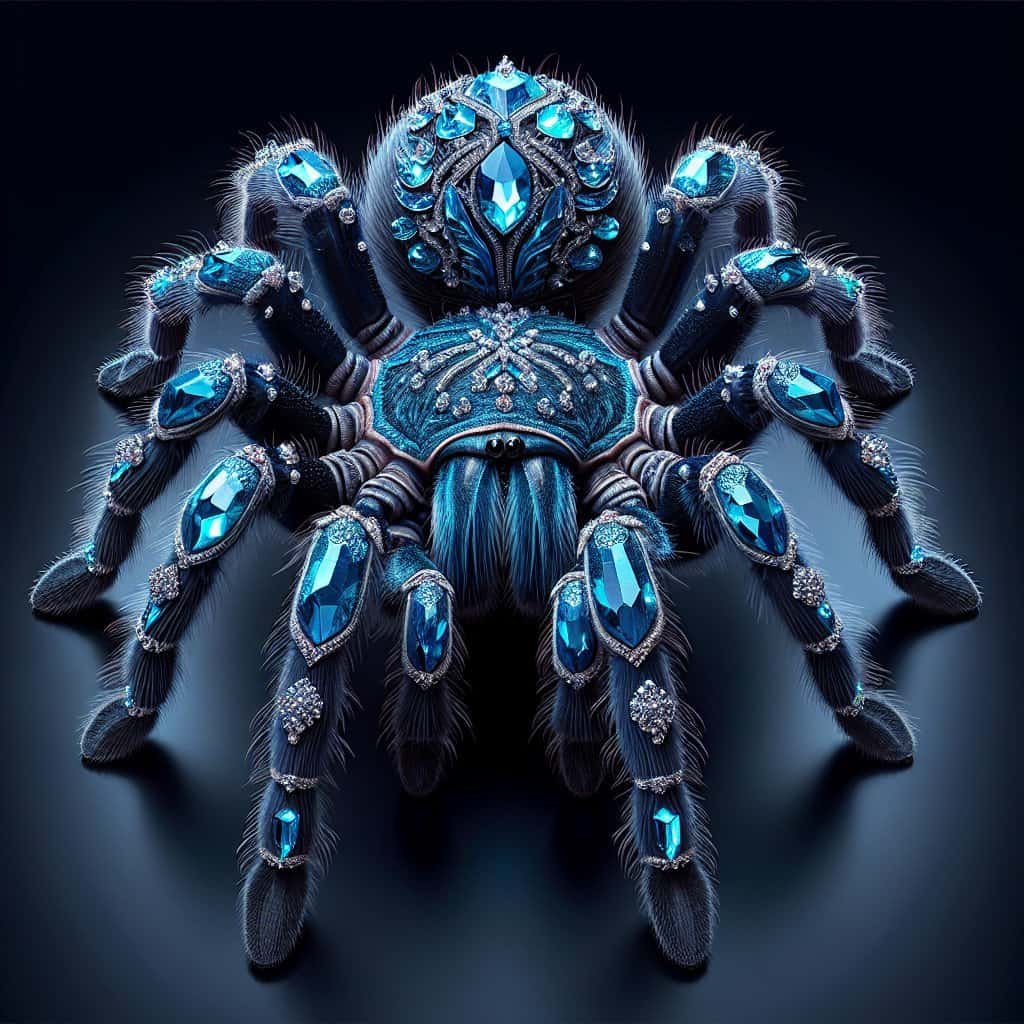If vibrant blue and striking patterns catch your eye, then the Gooty Sapphire Ornamental Tarantula is sure to captivate your attention. Known for its stunning appearance, this species of tarantula has a set of behaviors that make it truly unique. From its intricate web-building techniques to its fascinating hunting strategies, the Gooty Sapphire Ornamental Tarantula showcases an array of behaviors that set it apart from other tarantulas. As you delve into the world of this mesmerizing arachnid, you will discover the intriguing behaviors that make it a fascinating creature to study.
Physical Appearance
The Gooty sapphire ornamental tarantula is a stunning and vibrant species. It derives its name from its unique coloration, with a striking metallic blue body and vibrant markings that resemble sapphires, making it one of the most beautiful tarantulas in the world. With its leg span averaging around 6 inches, it is a relatively larger tarantula species. The Gooty sapphire ornamental tarantula is highly sought after by tarantula enthusiasts due to its captivating appearance.
Habitat
The Gooty sapphire ornamental tarantula is native to the deciduous forests of the Indian state of Andhra Pradesh. It prefers to inhabit trees with a dense canopy, where it can spin its intricate webs. These spiders are typically found in tree hollows, crevices, or in the bark of trees which provide them with a secure and sheltered environment. The tropical climate of its natural habitat, characterized by high humidity and moderate temperatures, is crucial for the well-being of the Gooty sapphire ornamental tarantula.

Feeding Habits
As an opportunistic predator, the Gooty sapphire ornamental tarantula actively hunts for its prey. Its primary diet consists of insects, such as crickets, grasshoppers, and beetles. It uses its sharp fangs to inject venom into its prey, immobilizing them instantly. The tarantula then secretes digestive enzymes onto its prey and sucks out the liquified contents, leaving behind an empty exoskeleton. While the Gooty sapphire ornamental tarantula usually captures its prey on the ground, it has also been known to occasionally hunt in the tree canopy.
Social Behavior
The Gooty sapphire ornamental tarantula is a solitary and territorial species. It prefers to live in isolation and will fiercely defend its chosen territory from intruders. While it may interact with other tarantulas during the mating season, it generally does not display any social behavior beyond this. These spiders spend the majority of their time hidden away in their nests, emerging only to hunt or during courtship rituals.

Mating Rituals
During the mating season, which typically occurs in the warmer months, the male Gooty sapphire ornamental tarantula embarks on a daring journey in search of a female. This journey can cover long distances, exposing the male to various threats. Once he finds a receptive female, he will perform an elaborate courtship dance, displaying his vibrant colors and tapping his legs on the ground to communicate with her. If the female is interested, mating will occur, and the male will quickly retreat to avoid being cannibalized by the female, a common behavior among tarantulas.
Territorial Behavior
The Gooty sapphire ornamental tarantula is highly territorial and fiercely defends its chosen area. It marks its territory with silk threads and pheromones to signal its presence to potential intruders. When threatened, this tarantula will display aggressive behavior, rearing up on its hind legs and exposing its fangs as a warning to predators or competing males. If the intruder persists, the Gooty sapphire ornamental tarantula may bite or flick urticating hairs, which can cause irritation and discomfort.

Defensive Mechanisms
The Gooty sapphire ornamental tarantula possesses several defense mechanisms to protect itself from threats. When cornered or threatened, it can flick urticating hairs from its abdomen, which can irritate potential predators or intruders. Additionally, it has venomous fangs and can deliver a painful bite if provoked. However, it is important to note that the venom of the Gooty sapphire ornamental tarantula is not considered medically significant to humans and is rarely dangerous unless the individual bitten has an allergic reaction.
Web Spinning Abilities
Despite being primarily ground-dwelling, the Gooty sapphire ornamental tarantula possesses impressive web-spinning abilities. It constructs intricate and well-designed webs to capture unsuspecting prey. Unlike many other tarantulas, its webs are not used for shelter but primarily as hunting tools. These webs are spun with incredible precision, featuring a radial design with sticky threads to ensnare insects that come into contact with them, ensuring an efficient and successful hunt.

Locomotion
The Gooty sapphire ornamental tarantula displays versatile locomotion skills. It can move with agility on the ground, utilizing its eight legs to navigate varied terrain. Despite its larger size, it is capable of running and climbing with surprising speed and dexterity. Additionally, it possesses fine hairs on its legs that aid in gripping surfaces, enabling it to effortlessly move vertically along tree trunks and branches.
Migration Patterns
The Gooty sapphire ornamental tarantula does not exhibit distinct migration patterns like some other species. It primarily remains within its chosen territory throughout its lifetime, patrolling and hunting in the vicinity of its nest. However, during the mating season, the males undertake long journeys to locate and court potential mates, which could be considered a form of migration. These journeys entail crossing various obstacles and navigating unfamiliar terrain, exposing them to potential threats and predators.

